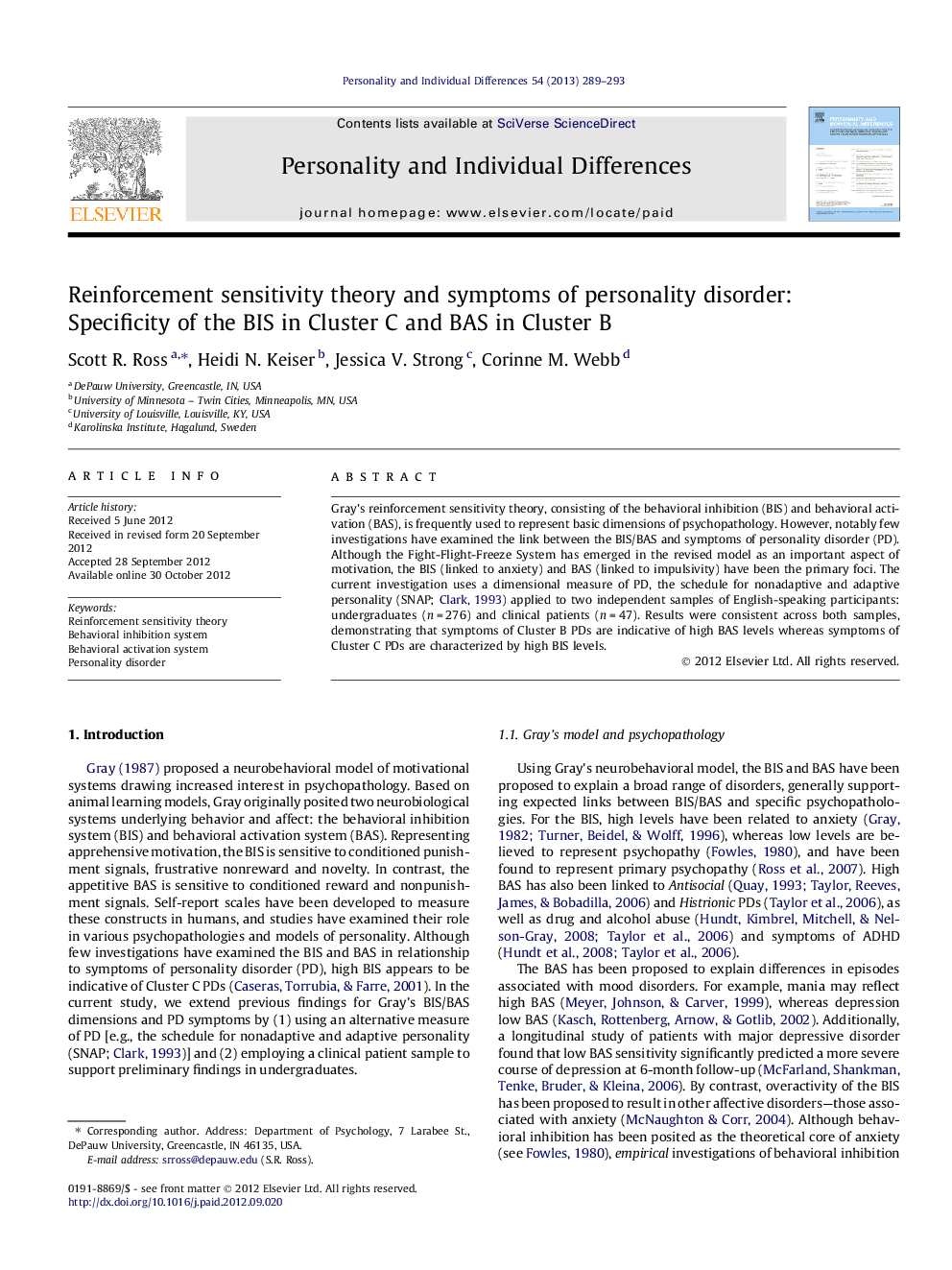| کد مقاله | کد نشریه | سال انتشار | مقاله انگلیسی | نسخه تمام متن |
|---|---|---|---|---|
| 891361 | 914035 | 2013 | 5 صفحه PDF | دانلود رایگان |

Gray’s reinforcement sensitivity theory, consisting of the behavioral inhibition (BIS) and behavioral activation (BAS), is frequently used to represent basic dimensions of psychopathology. However, notably few investigations have examined the link between the BIS/BAS and symptoms of personality disorder (PD). Although the Fight-Flight-Freeze System has emerged in the revised model as an important aspect of motivation, the BIS (linked to anxiety) and BAS (linked to impulsivity) have been the primary foci. The current investigation uses a dimensional measure of PD, the schedule for nonadaptive and adaptive personality (SNAP; Clark, 1993) applied to two independent samples of English-speaking participants: undergraduates (n = 276) and clinical patients (n = 47). Results were consistent across both samples, demonstrating that symptoms of Cluster B PDs are indicative of high BAS levels whereas symptoms of Cluster C PDs are characterized by high BIS levels.
► Reinforcement sensitivity theory (RST) has rarely been applied to personality disorder (PD).
► BIS was selectively associated with Cluster C; BAS was associated with Cluster B PD symptoms.
► These results were generalizable across normal undergraduate and clinical samples.
► The RST appears useful in capturing differences in internalizing and externalizing PD symptoms.
Journal: Personality and Individual Differences - Volume 54, Issue 2, January 2013, Pages 289–293